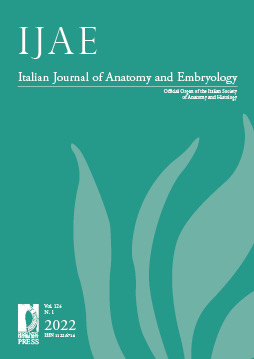The “prince of anatomists” Paolo Mascagni and the modernity of his approach to teaching through the anatomical tables of his Anatomia universa. A pioneer and innovator in medical education at the end of the 18th century and the creator of unique anatomica
Published 2022-09-21
Keywords
- Paolo Mascagni,
- dissection,
- medical education,
- teaching aids,
- collections of anatomical tables
How to Cite
Abstract
In the wake of the great anatomists, Paolo Mascagni introduced important innovations into the methods of studying anatomy, as revealed both by his writings and, especially, by his approach to the analysis of anatomical sciences. He devoted his whole life to the study of anatomy, which he considered a mainstay of medical education.
Mascagni’s great originality in this field lay in the fact that he designed new, modern tools for the teaching of anatomy – tools that enabled students to gain greater understanding of the human body even in the absence of dissection, which was regarded as indispensable in those days.
His two most important results were the first description of the lymphatic system and the clear and precise anatomical tables of the Anatomia Universa. This “modern and evocative anatomical atlas” was the first to present precise, life-size drawings of the human body.
The present overview aims to illustrate the modernity of this great scientist, his approach to the study of anatomy, his meticulous attention to topographical anatomy, and the utility of his innovative methods, which were to mark the evolution of medical education for many years.



